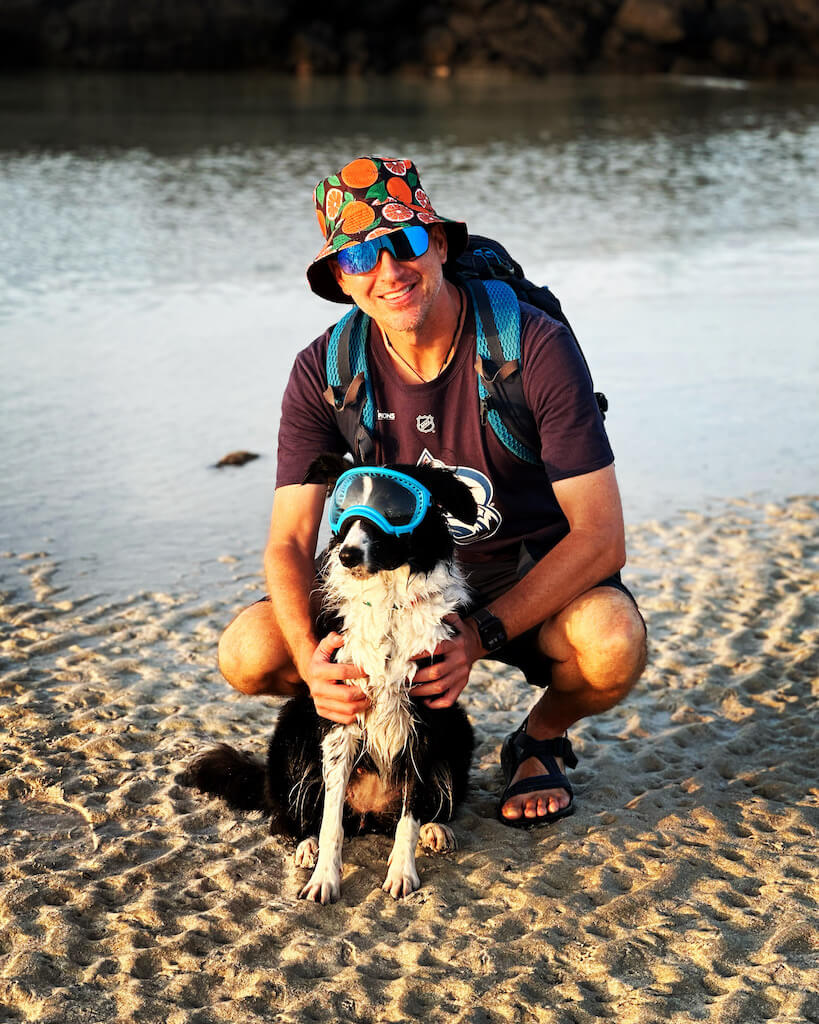Planning a Sapa 3 day itinerary without a guide? Here’s how we did it — flexible, scenic, and full of valley vibes.
🚞 What It’s Like to Explore Sapa Without a Guide for 3 Days
You don’t need a guide to experience Sapa — but whether you should depends on your travel style, the season, and how deep you want to go.
For us, skipping the guide came down to three things: unpredictable rainy season weather, a flu I picked up on our Ha Long Bay tour, and the kind of trip we were looking for — flexible, relaxed, and less about hiking dawn to dusk with a group, more about soaking in the views and doing things on our own terms.
We’re not hardcore trekkers — at least, not as a couple on this trip. I’ve tackled some pretty epic trails over the years, but this one was about misty valleys, noodle stops, and pacing ourselves — not chasing bragging rights.
Quick heads up: This post may contain affiliate links to gear, hotels, flights, or experiences I’ve used — or genuinely recommend. If you book through one, I may earn a commission at no extra cost to you. Full disclosure here.
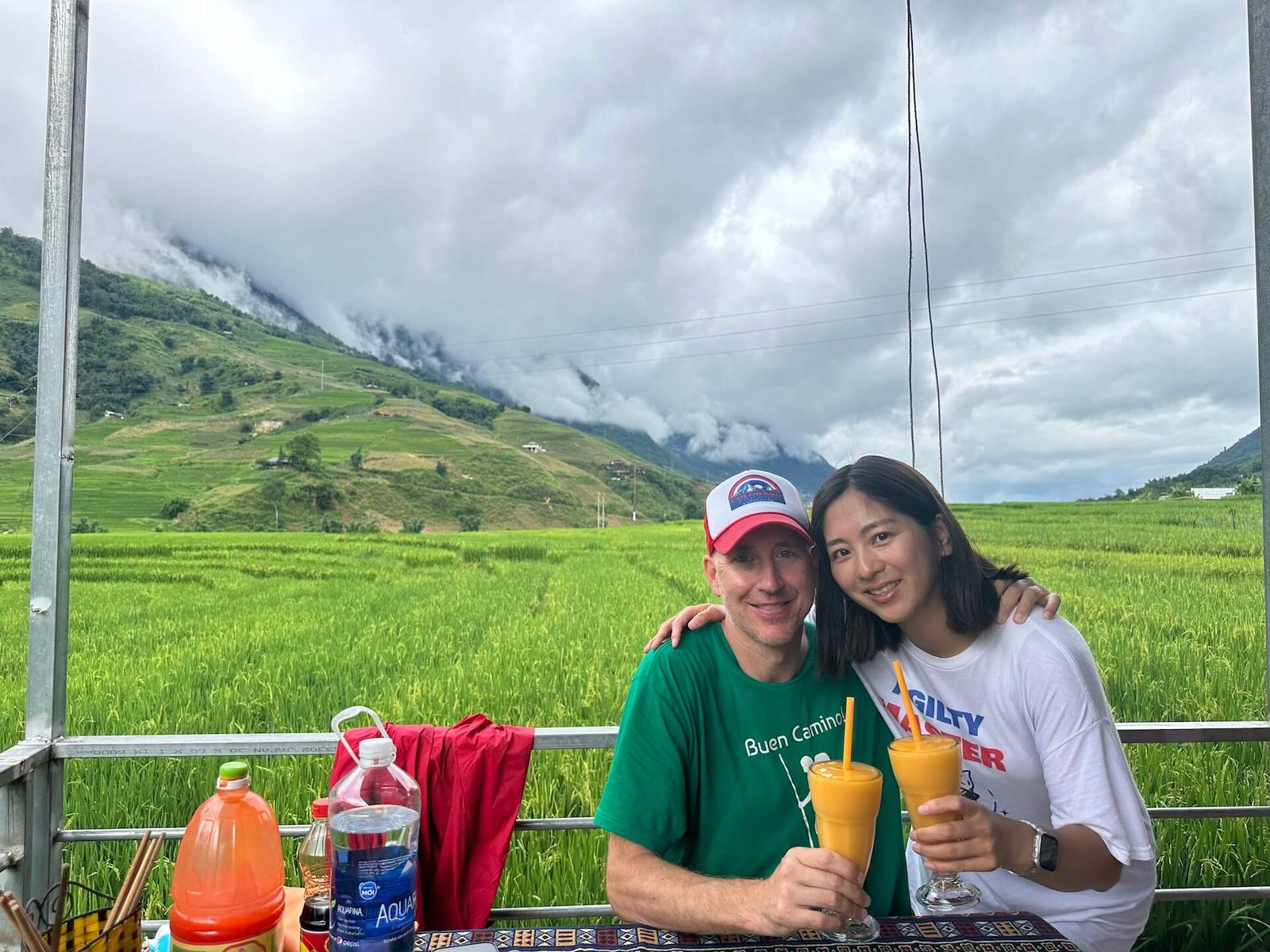
Years ago, I had a deep, immersive hill tribe experience in a remote part of Myanmar. So I came into Sapa knowing it would be more polished — and that was fine by me. This trip wasn’t about recreating that. It was about fresh air, shared adventure, and perhaps a cool mango smoothie between the clouds.
This itinerary reflects how we spent our three nights in Sapa — light trekking, cultural moments, and a cable car ride into the fog. It’s not a rigid hour-by-hour schedule. Think of it as a flexible, field-tested route you can tweak based on weather, mood, or energy.
Whether you’re trekking solo, traveling as a couple, or just not in the mood for a tour, here’s how to see the best of Sapa in three days — independently, enjoyably, and without missing the highlights.
🗓️ 3-Day Sapa Itinerary at a Glance
If you’re trying to figure out how to spend a few days in Sapa without joining a tour, here’s how we did it — three flexible days built around walking, weather windows, and whatever sounded good at the time. You can shuffle the order based on mood, energy, or the forecast, but this sequence worked out well for us during the rainy season.
We definitely rolled the dice with the weather: light rain on our trekking day, fog and drizzle on the Fansipan cable car, and then — just in time — clear skies for our last day exploring Cat Cat Village (complete with a full H’Mong outfit rental for my wife and a camera roll to prove it).
If you’re visiting during the dry season, you’ll probably have fewer decisions to make around puddles and cloud cover. But even in the wet months, this itinerary still works — just stay flexible and prep for conditions that can change by the hour.
The breakdown below gives you a solid jumping-off point.
| Day | Highlights | Notes |
|---|---|---|
| 🥾 Day 1 | Self-guided trek from Sapa town to Lao Chai Village via Muong Hoa Valley | Beginner-friendly hike with beautiful views, local stops, and flexible timing |
| 🚡 Day 2 | Fansipan Peak via monorail, cable car, and summit temple complex | Easiest way to “summit” Vietnam’s highest peak — expect changing weather |
| 👘 Day 3 | Cat Cat Village visit + H’Mong clothing rental + cultural stroll | Scenic, accessible loop trail with shops, waterfalls, and photo ops |
🛏 Where to Stay in Sapa for This 3-Day Itinerary
We used Pao’s Sapa Leisure Hotel as our base — and it turned out to be a perfect launchpad. Perched on the edge of town with sweeping views of the Muong Hoa Valley, it’s close enough to walk into Sapa, but just far enough to feel like a quiet retreat. Bonus: our Day 1 trek started basically at the front steps.

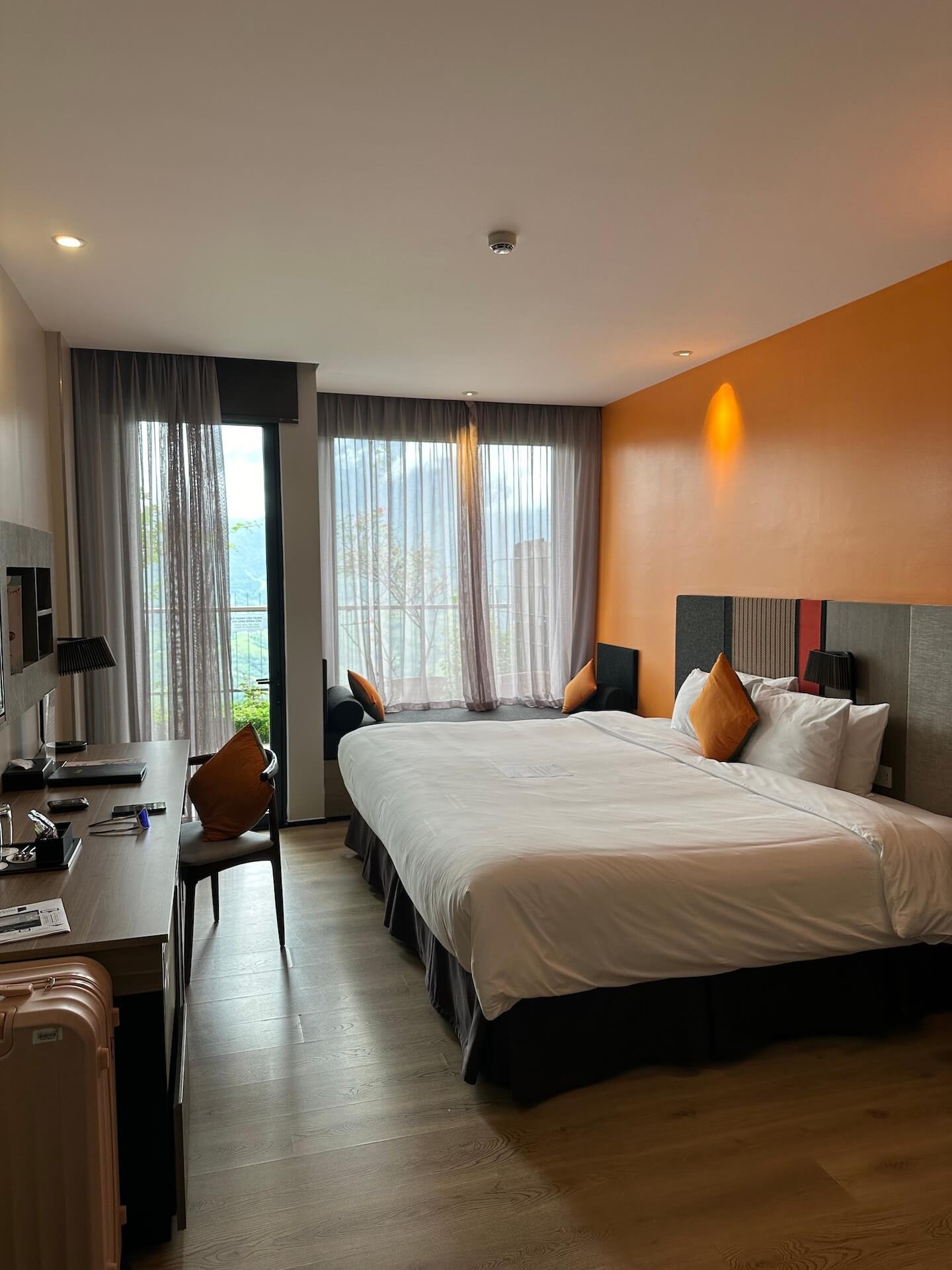
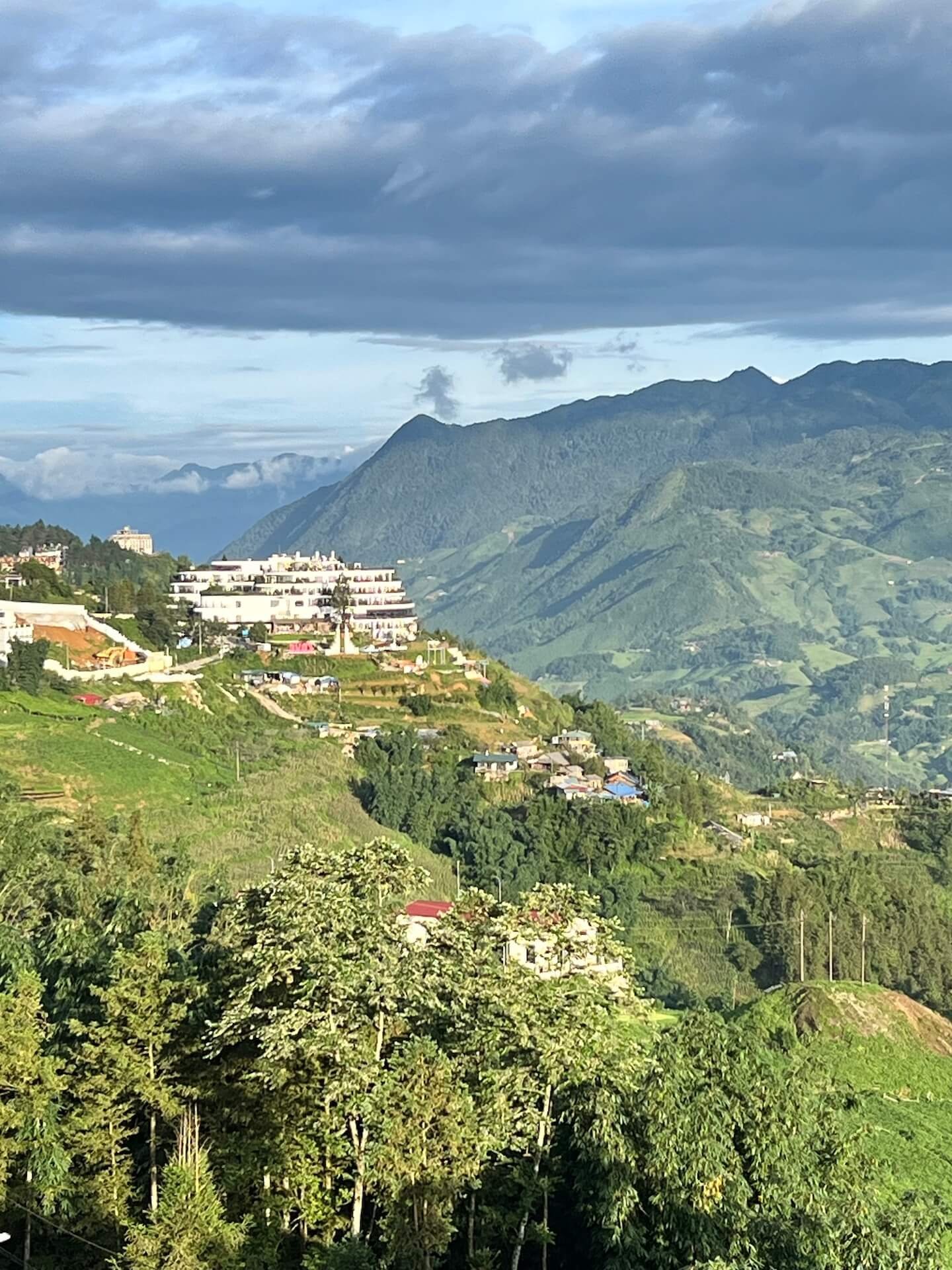
If you’re on a tighter budget or prefer a more social vibe, Sapa Backpacker Hostel and Eco Rice Fields House are both solid picks — affordable, well-reviewed, and right in the mix for independent travelers.
Prefer something quieter or more local? You can also browse homestays and eco-lodges on VRBO, including some great valley-view spots if you’re thinking about spending a night down in Lao Chai or Tả Van.
Wherever you stay, try to find a place with easy access to the valley. Starting your day with a mountain view doesn’t hurt either.
🥾 Day 1: Self-Guided Trek from Sapa to Lao Chai Village
We kicked off our trek right from Pao’s, heading downhill on foot along the main road for about 20–30 minutes. It’s not the most scenic start (more pavement and passing motorbikes than misty rice terraces) but it gets the job done. And it gets you into the valley fast.
Expect to pass a few guesthouses, dodge some puddles, and maybe field a couple of overly persistent offers from informal “guides” (more on that below).
Eventually, you’ll leave the road behind and drop into the kind of landscape you probably came to Sapa for: layered hillsides, winding trails, and a patchwork of farms and village life that feels like stepping into another rhythm entirely.
🗺️ Overview of the Trekking Route
The hike itself was simple and rewarding — a half-day walk from Sapa to Lao Chai Village, with a cozy lunch stop and enough time to wander around the village at the end. We pieced together our route using Google Maps, a few tips from Korean travel blogs, and a little real-time improvisation on the ground.
Here’s how the route breaks down:
- A: Pao’s Sapa Leisure Hotel (starting point)
- B: Sapa Clay House (trail turnoff)
- C: Cúc Restaurant & Coffee (lunch + rest stop)
- D: The Local Restaurant, Lao Chai Village (end of trek)
You can follow the same general route using the Google MyMap embedded below, which lays out the key turns. Because of the rain, we stuck to the semi-paved road, but if you’re trekking in drier conditions, you’ll spot dirt trails that cut through the fields and offer a more immersive (and muddier) experience.
📍 A: Trail Start – Walking Down from Sapa Town
Whether you’re staying at Pao’s Sapa Leisure Hotel (like we did) or somewhere else in or near town, the route kicks off with a downhill walk along the main road toward the valley. For us, it was easy: big breakfast, quick cleanup, and straight out the front door — turn right and head down.
It’s about a 20–30 minute walk to reach the first key waypoint (B: Sapa Clay House). This stretch isn’t especially scenic, but it’s smooth and manageable. You’ll pass a mix of guesthouses and homestays, a bit of traffic, and likely a few persistent “guides” offering to join you. Just smile, stay polite but firm, and keep Google Maps handy — the trail turnoff comes up fast and isn’t marked.
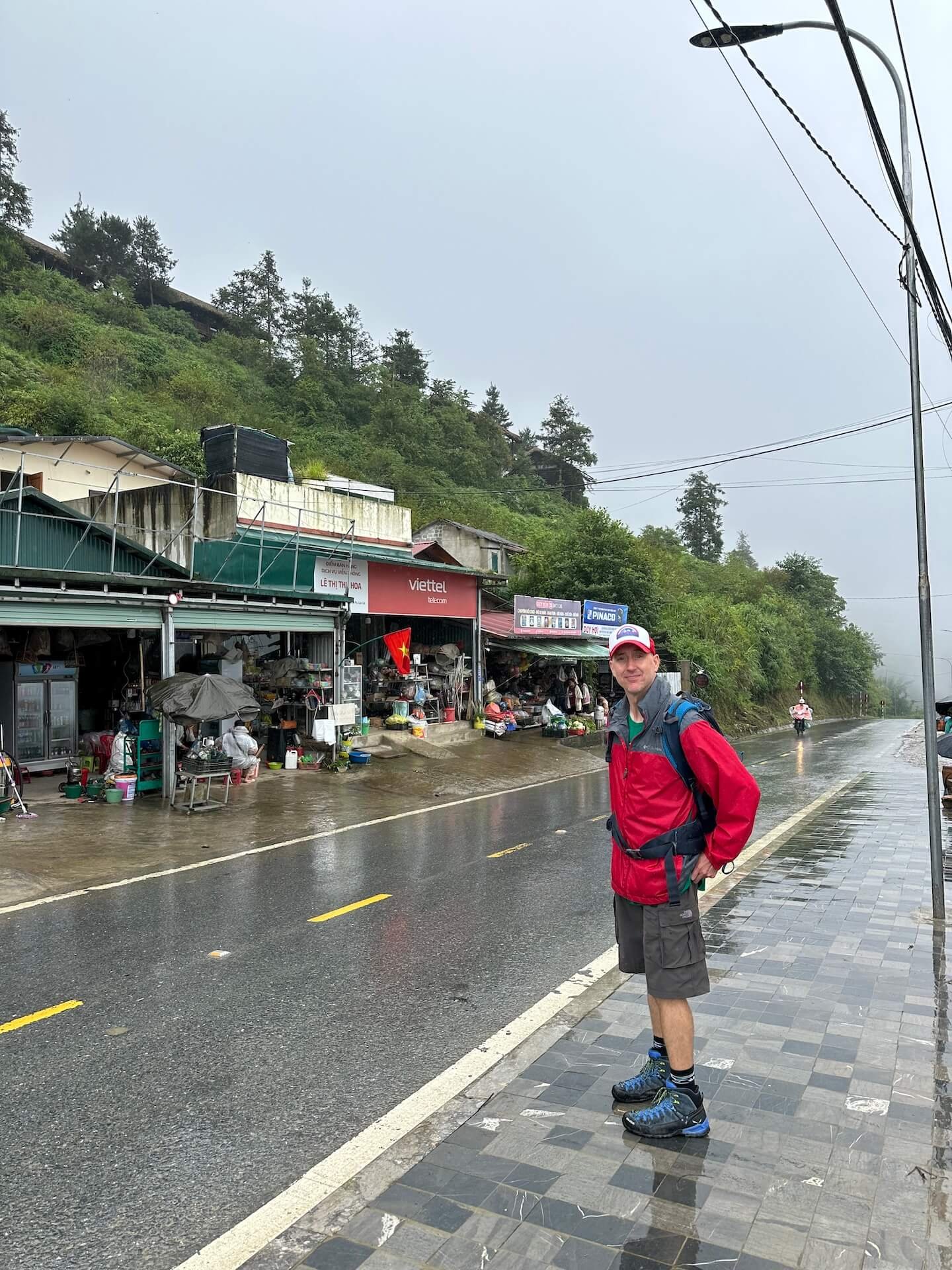
📍 B: Sapa Clay House – Turnoff to the Valley
The real adventure begins at Sapa Clay House, a hillside eco-lodge that marks the moment you leave the road behind. Look for a small path on the right, just past a blue gate — there’s no sign, but this is your off-ramp from asphalt to trail.
It’s an easy spot to miss if you’re not watching your map, but it’s a key navigation point. Once you make the turn, the whole landscape shifts — misty ridgelines, layered terraces, and the low hum of valley life waiting below.
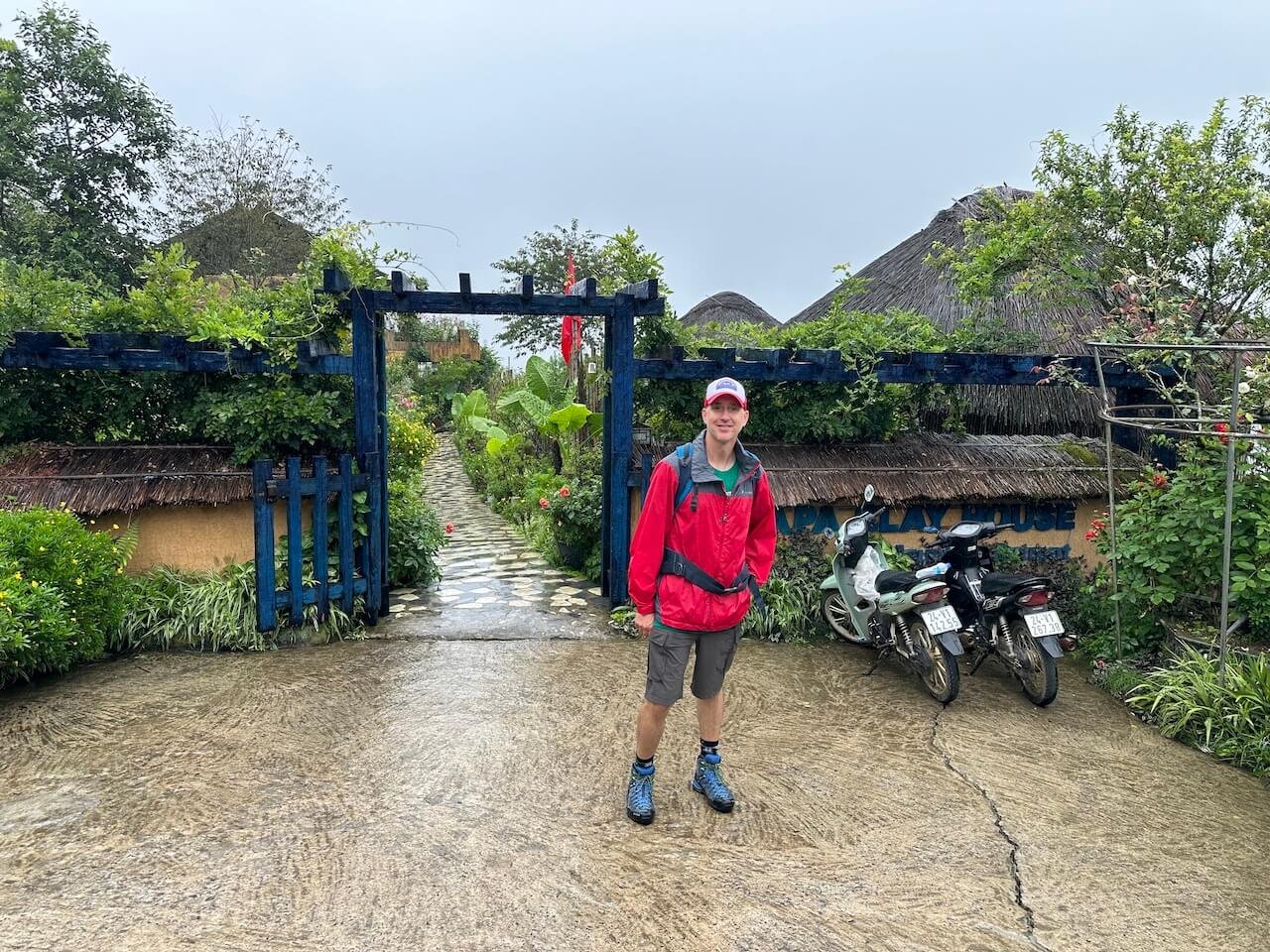
📍 C: Cúc Restaurant & Coffee – Midpoint Rest
A few hours into the trek — depending on your pace and photo stops — you’ll reach Cúc Restaurant & Coffee, a cozy hillside café that feels like a little oasis mid-hike. We arrived soaked from steady morning rain, craving something warm, and were rewarded with steaming bowls of phở, clearing skies, and a couple of curious puppies wagging us back to life.
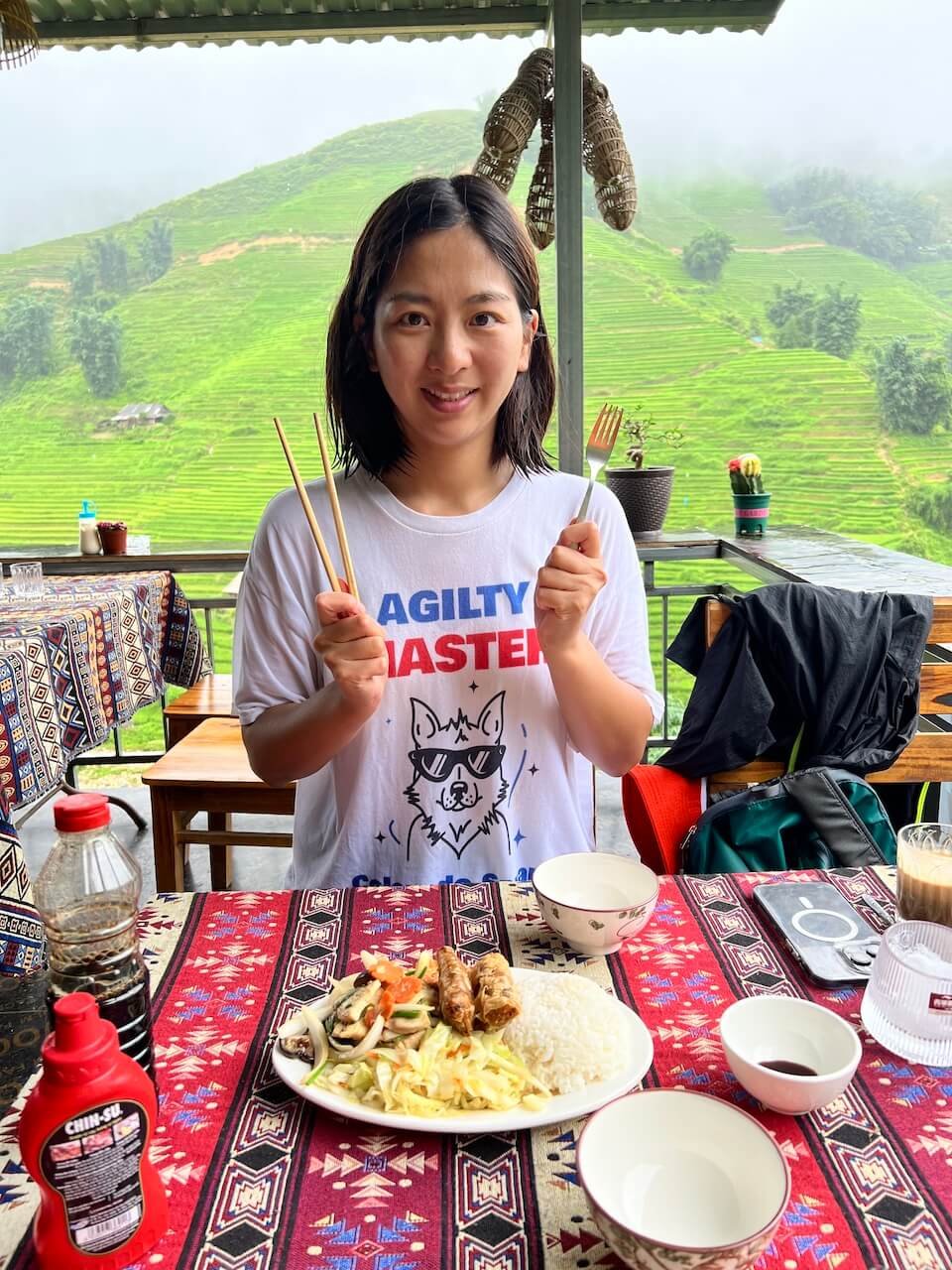
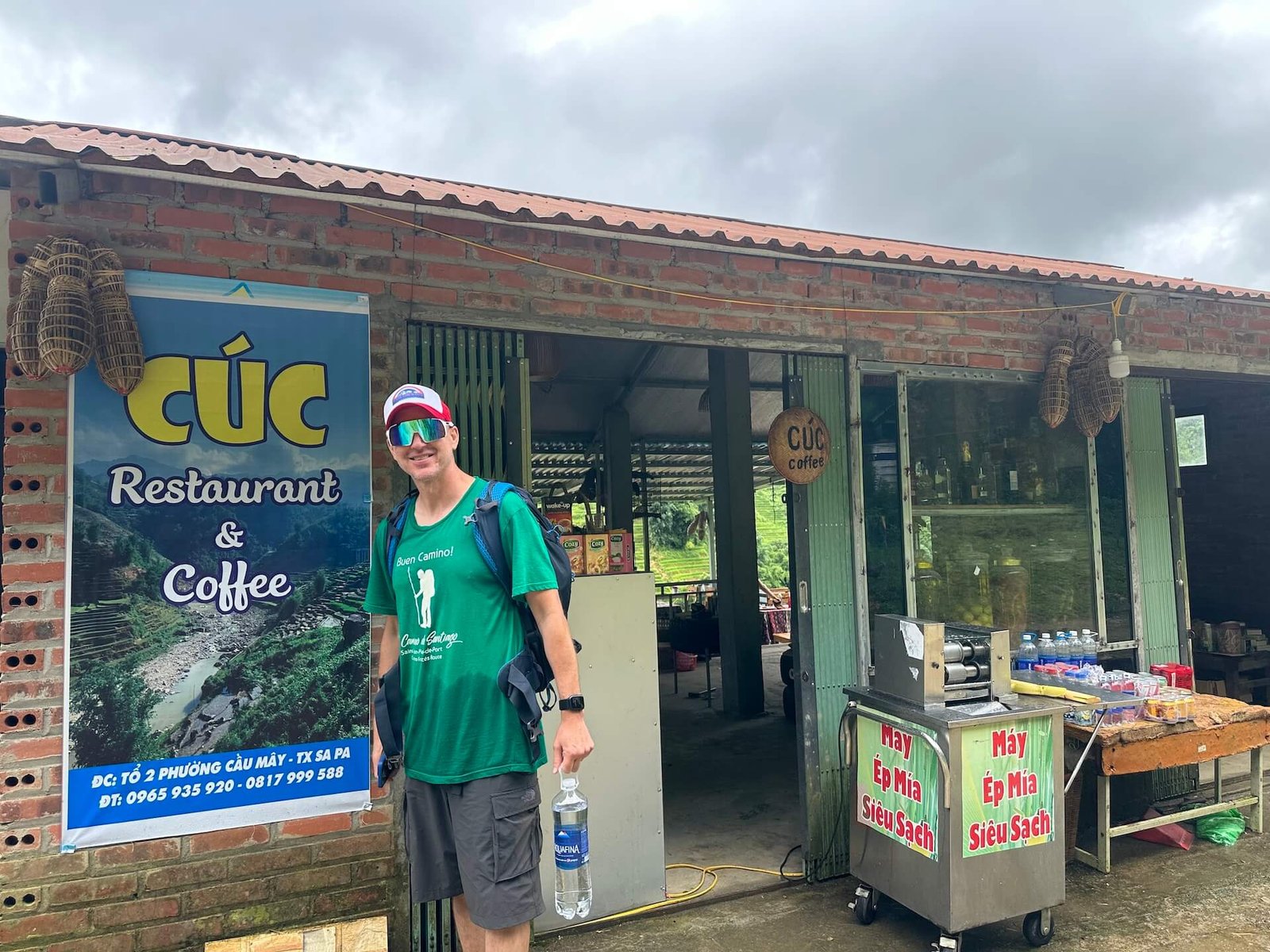
The setup is simple and friendly — a great place to dry off, recharge, and swap smiles with other trekkers before the final stretch down into Lao Chai.
📍 D: Lao Chai Village – Trek Endpoint
As the trail levels out, Lao Chai Village comes into view — a mix of stilt homes, rice fields, and scattered shops selling everything from textiles to snacks to what might be the hundredth embroidered coin purse you’ve seen that day. Still, it’s a genuinely welcoming place. We spent a couple of hours here exploring the village and its outskirts — wandering through rice terraces, ducking into a few cafés, and chatting with shopkeepers and other trekkers along the way.
We wrapped up our hike at The Local Restaurant, a laid-back open-air spot with valley views and cold mango smoothies that hit just right after a wet morning on the trail.
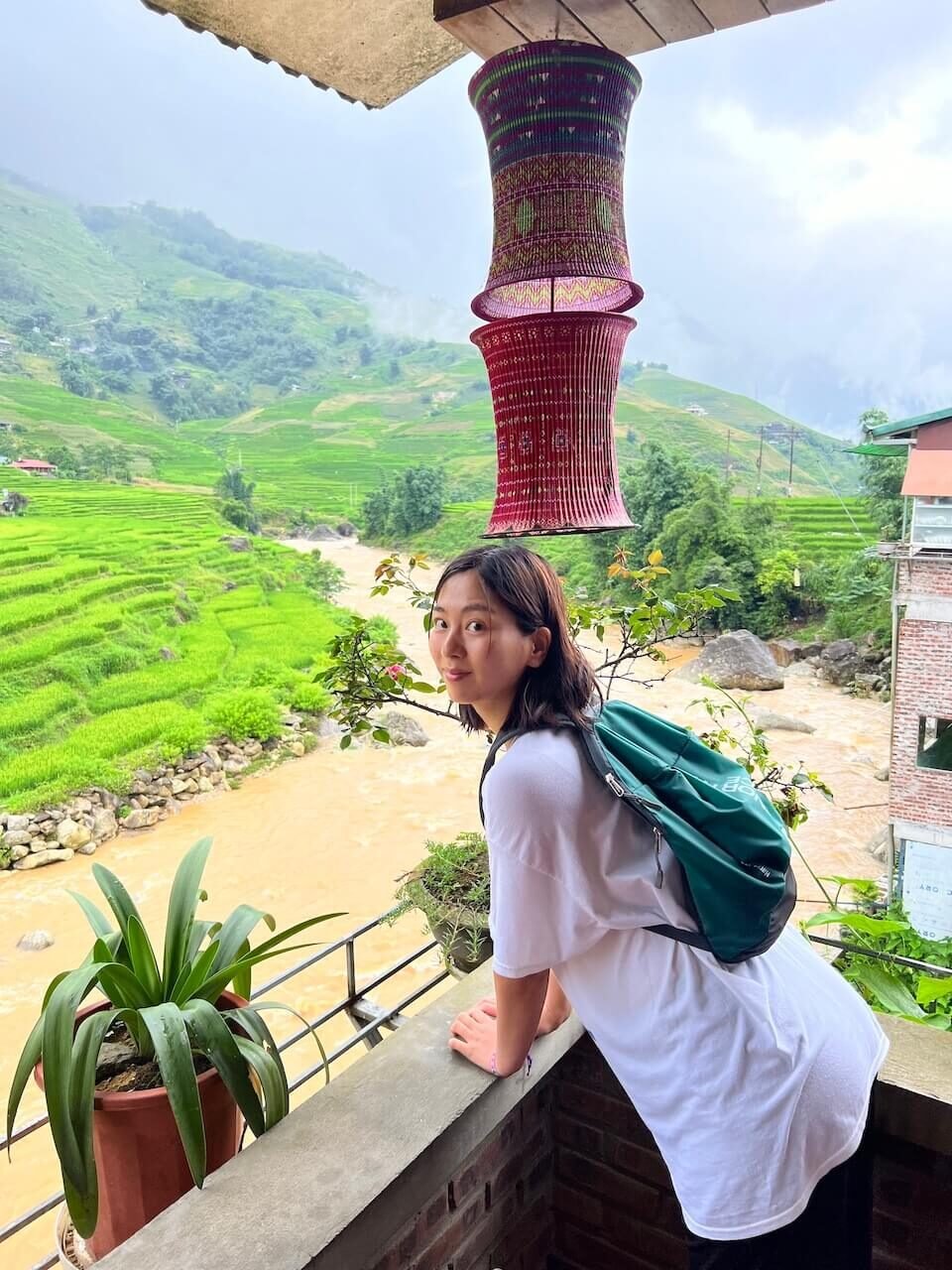

From here, you’ve got a few options:
- Keep trekking to Tả Van Village
- Grab a motorbike or taxi back to Sapa
- Stay overnight in a homestay in Lao Chai or nearby
We had our digs already sorted at Pao’s, so we caught a ride back — but honestly, staying in one of the local homestays here looked pretty great. Lao Chai feels more lived-in than polished. Still tourist-friendly, but a little muddy, a little raw, and a lot more real than Cat Cat Village.
🎥 Exploring Lao Chai Village in the Rain (Video)
Here’s a quick look at what Lao Chai feels like during a rainy season visit — souvenir stalls, rice terrace paths, and a well-earned smoothie at The Local Restaurant. We filmed this after wrapping up our trek from Sapa, just before catching a Grab ride back to town.
🚠 Day 2: Riding the Fansipan Cable Car to the Roof of Indochina
We saved our legs and took the scenic route to the top of Fansipan, Vietnam’s highest peak (3,147 m / 10,326 ft). And by scenic, I mean a monorail → cable car → funicular combo that gets you from downtown Sapa to the summit with minimal effort and maximum altitude.
On a clear day, the views are supposed to be jaw-dropping — rice terraces, jungle ridges, the whole Muong Hoa Valley.
For us? Thick fog drifted between temples and statues, cloaking the summit in a kind of hushed, mystical quiet. It wasn’t a bluebird day, but the clouds lifted just enough for a few dramatic summit shots — and honestly, the mist made it feel even more otherworldly.
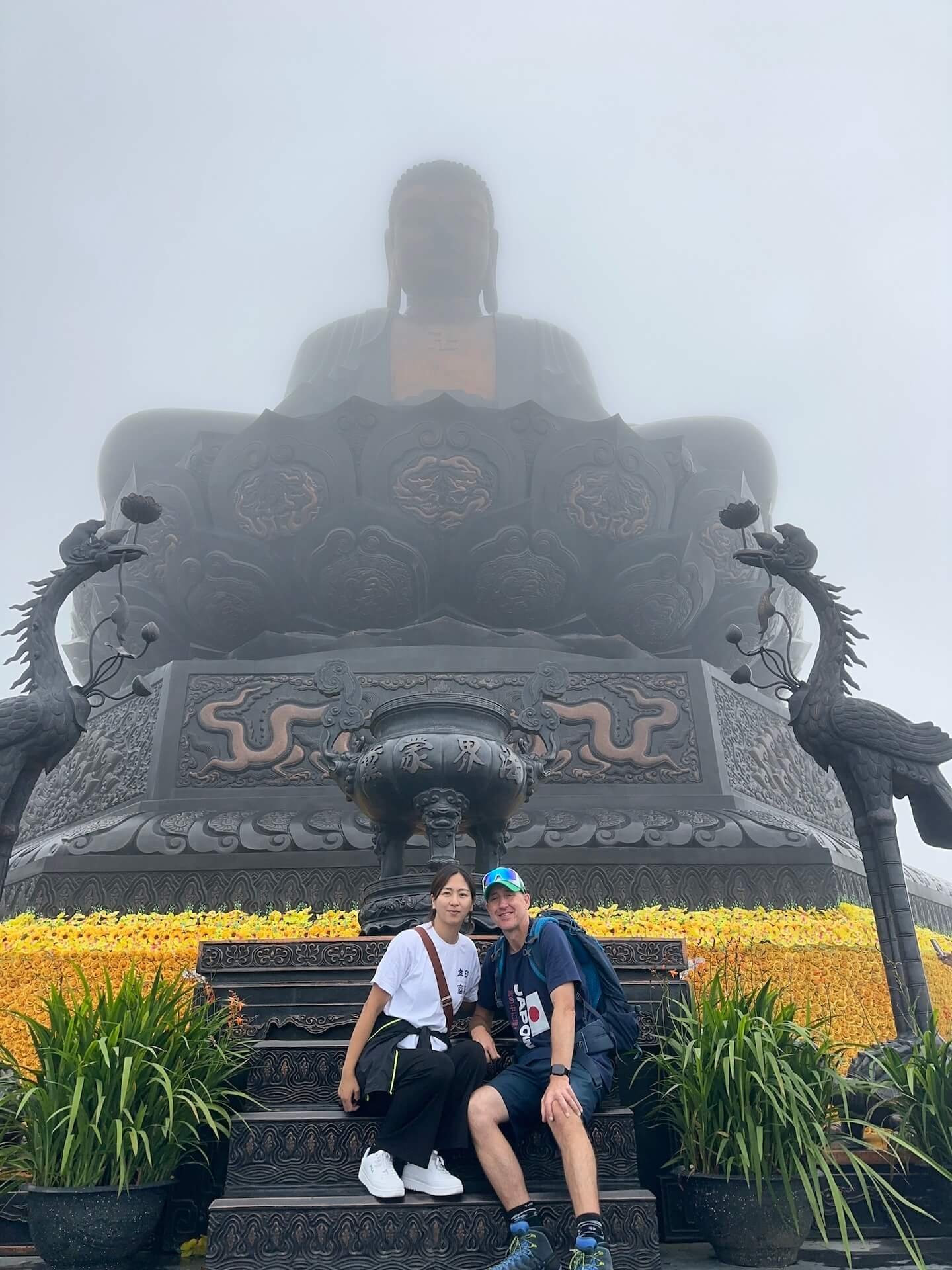
🧭 How to Get to the Cable Car Station
Your journey starts inside Sun Plaza, the ornate yellow building at the heart of Sapa.
Step 1:
Ride the Muong Hoa Monorail
Hop the short train ride through the hills — a scenic intro that drops you at Muong Hoa Station, near the cable car base.
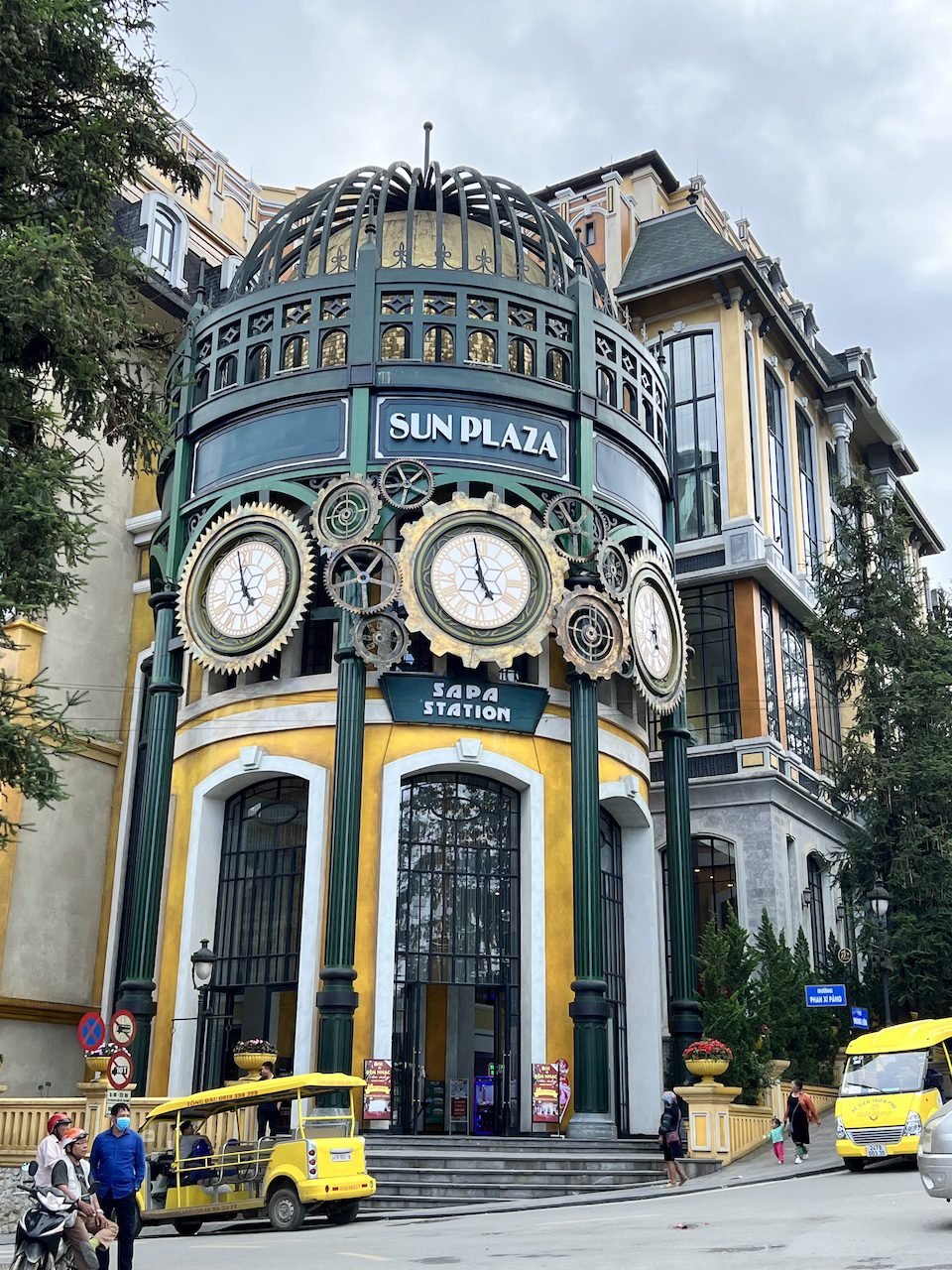

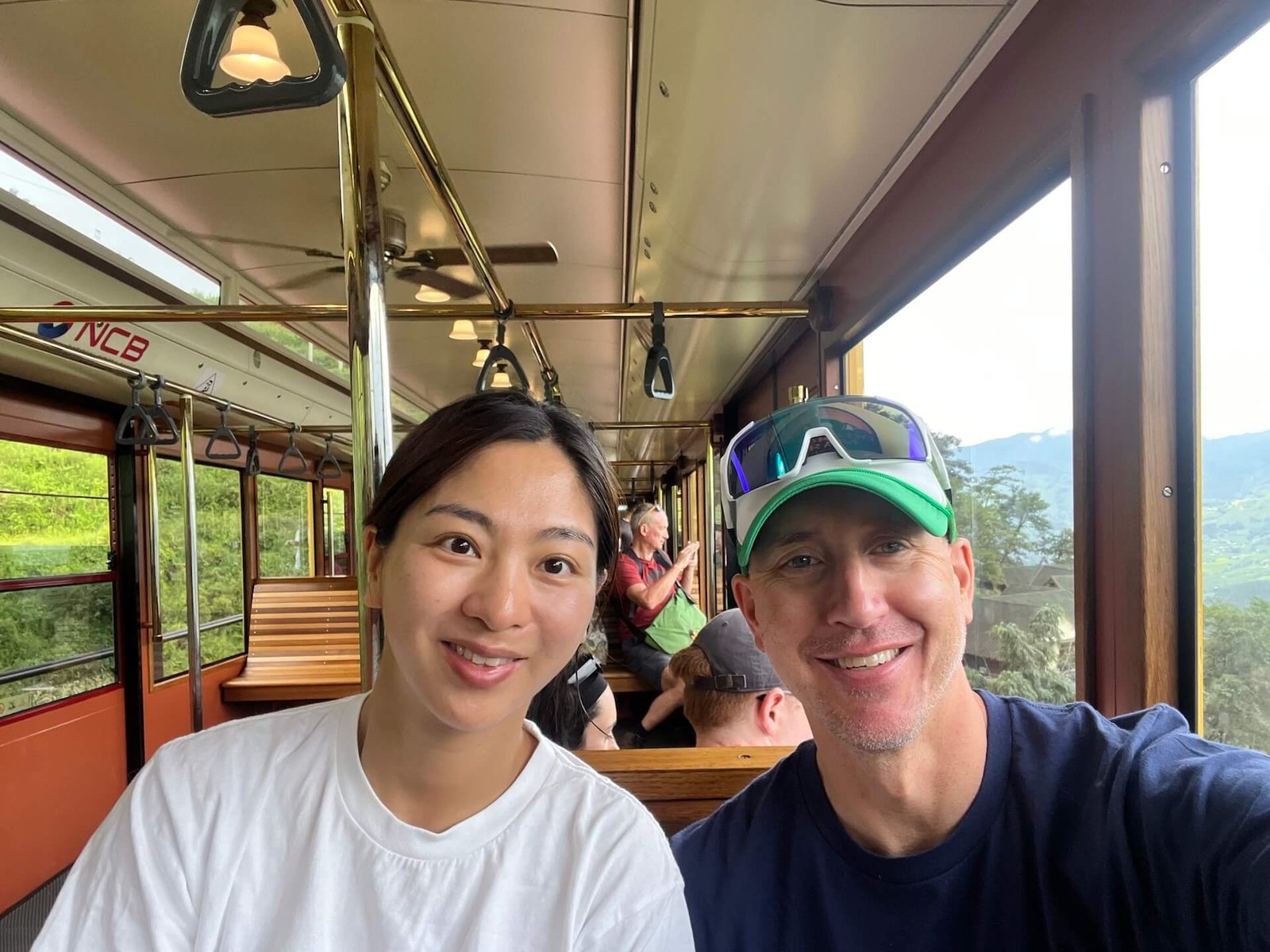
Step 2:
Walk to the Fansipan Cable Car Terminal
This is where it gets a bit confusing. After exiting the monorail, follow signs for the cable car — not the main park exit (we made that mistake and had to be escorted back in by security). Look for the upper-level walkway leading toward the cable car entrance.

Step 3:
Board the Cable Car (15–20 min ride)
The ride itself is spectacular — gliding above the Muong Hoa Valley and into the clouds. It’s a smooth 15–20 minutes up, with views that range from rice terraces to jungle ridgelines (weather permitting).

Step 4:
Explore the Upper Station & Board the Funicular
When you arrive at the top cable car station, expect a serious drop in temperature. Take a moment to acclimate, layer up, and grab a few photos. Then head up the stairs and board the summit funicular — it’ll take you the final leg to the Fansipan summit complex.


Step 5:
Summit Walk & Photo Ops
Once you hop off the funicular, you’re nearly there. Walk up a few final staircases and you’ll reach the summit platform — complete with the Fansipan marker, misty temple views, and plenty of great photo spots. If the clouds part, it’s unforgettable. If they don’t… still pretty cool.

Step 6:
Walk Down Through the Temple Complex
We recommend skipping the funicular ride down and descending by foot. You’ll pass through quiet walkways lined with statues, pagodas, and mountaintop shrines — like a high-altitude spiritual park. Just take it slow on the stairs, especially if it’s damp.
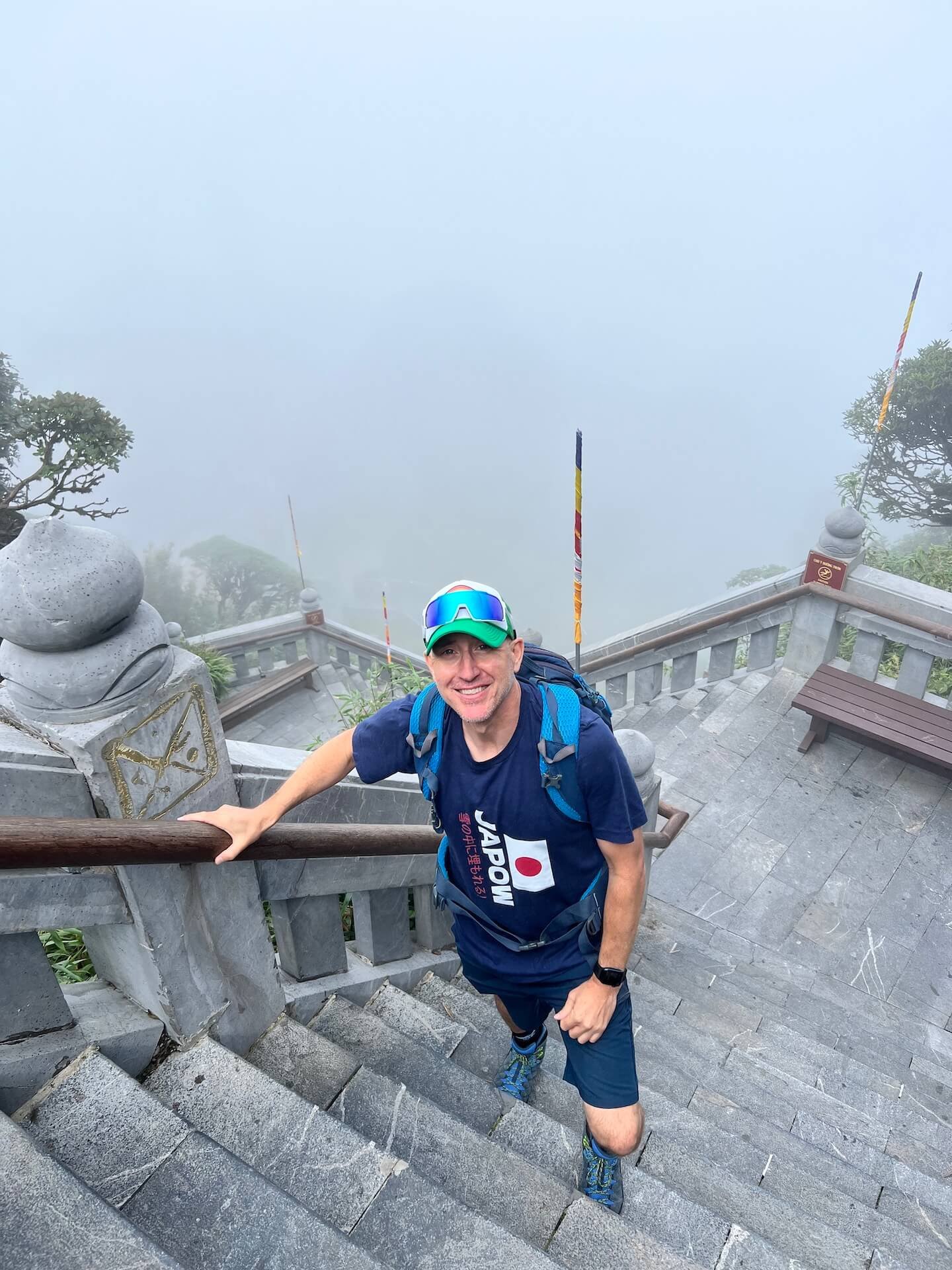
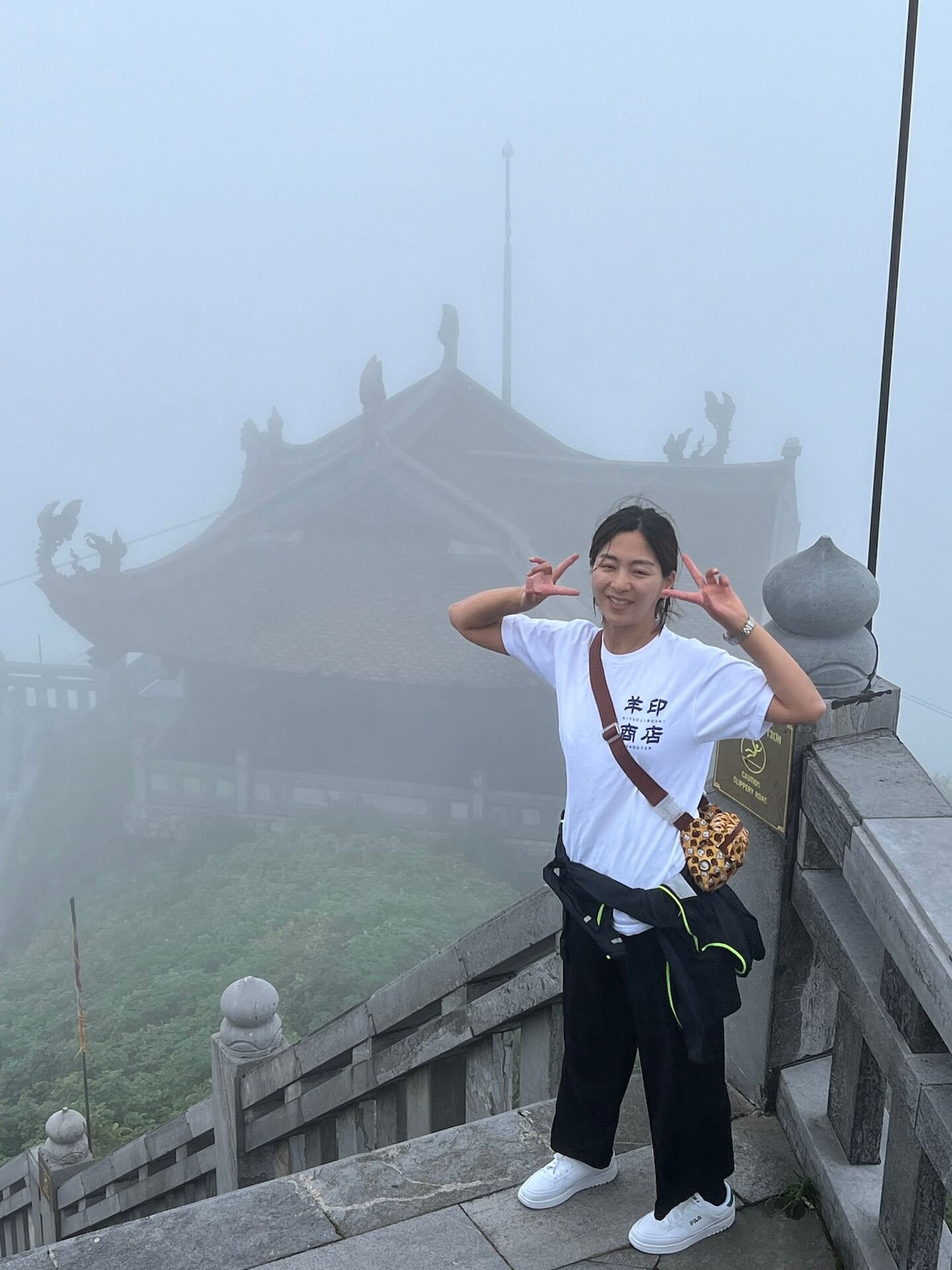
🎟️ Where to Book Fansipan Tickets
We booked the Fansipan Cable Car + Muong Hoa Monorail + Peak Funicular (One-Way Up) combo through Klook — fast, seamless, and no printed vouchers required. Just scan the barcode at each point: monorail, cable car, and summit funicular. Prices range from about $30 to $44 USD, depending on the package.
👉 Check availability and book your Fansipan combo tickets on Klook
🏔 What to Expect at the Summit
Even with the fog, the summit of Fansipan still delivered. The clouds gave it a surreal, float-above-the-world kind of feel — and once they parted, we even got a few dramatic shots by the summit marker.
Here’s what you’ll find up top:
- The Fansipan Marker – the classic photo op at 3,143 meters
- Buddhist Temples & Pagodas – peaceful, ornate, and wrapped in mountain mist
- Scenic Walkways & Statues – more mood than panorama on cloudy days, but still great to explore
There are a few cafés and snack stands as well. Prices are tourist-level, but the vibe’s hard to beat. We grabbed coffee, wandered through the fog, and just took it all in.
🎥Here’s a quick video from our summit walk:
🧥 Weather & Altitude Tips
Growing up in the Rockies, I learned this one early: you can always take a layer off — but you can’t put it on if you didn’t bring it. The same applies here.
- Temps at the top are often 10–15°C colder than in town
- Expect fog, wind, and light drizzle, even in warmer months
- If you’re altitude-sensitive, take it slow — it’s a quick elevation jump
👘 Day 3: Explore Cat Cat Village + Try a Cultural Clothing Rental
We wrapped up our time in Sapa with something a little more lighthearted: a visit to Cat Cat Village, one of the most accessible — and yes, touristy — ethnic minority villages in the area. It’s not going to give you the same raw feel as Lao Chai, but if you know what to expect, it’s a fun half-day outing with a few surprises.
Case in point? My wife suited up in full H’Mong attire for a rooftop photoshoot, and I played designated photographer-slash-sherpa for the morning. As a Korean, she was all in — cultural dress-up is a big part of travel for many Koreans, and we weren’t the only ones there doing it. A few European tourists even asked to take her photo, assuming she was local.

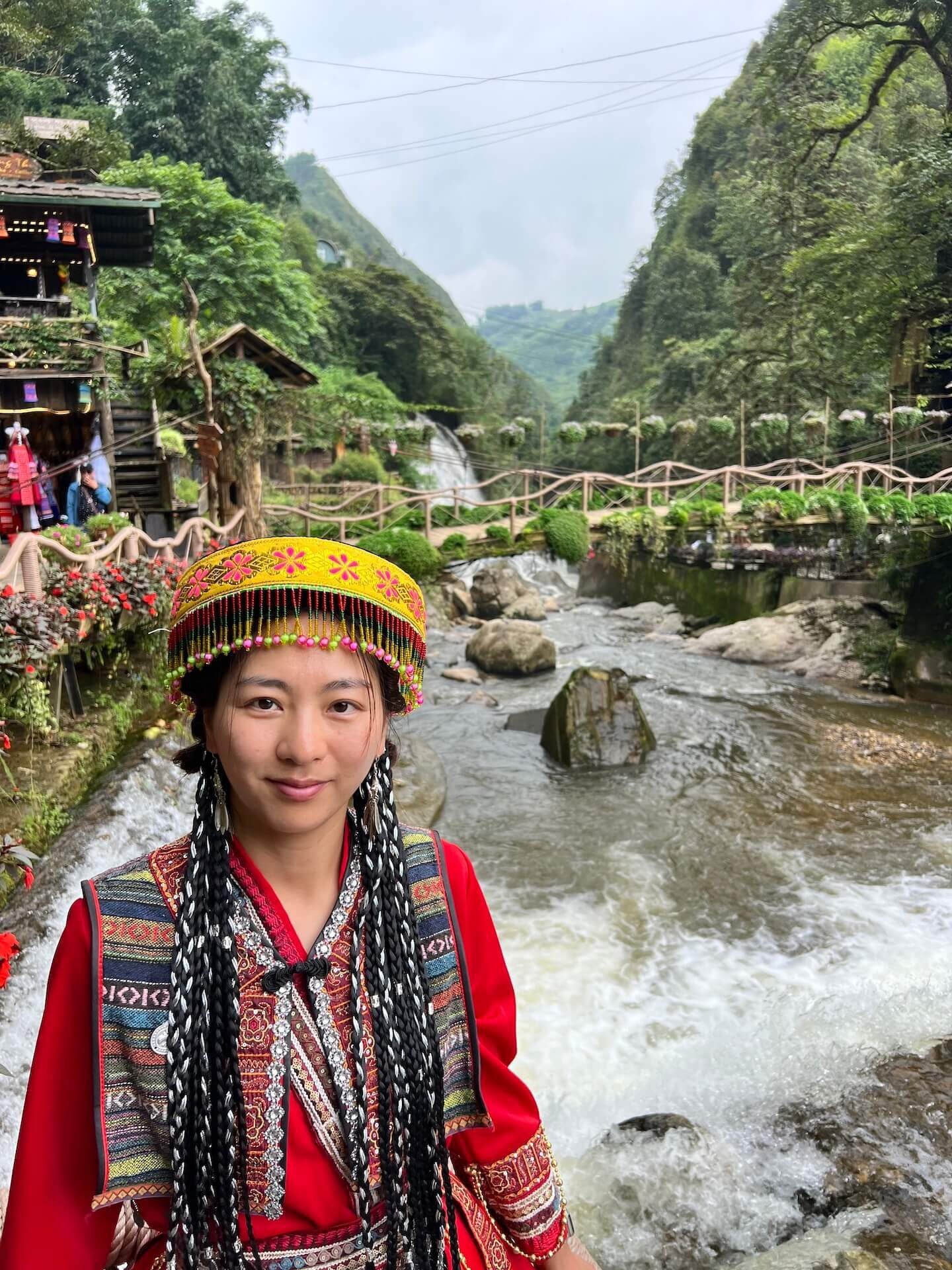
🏞️ What to Expect on the Cat Cat Loop Trail
Cat Cat is a curated loop that winds through a village-like setup of wooden homes, waterfalls, cafes, and handicraft shops.
Expect:
- Well-maintained walking paths (some stairs, some cobblestone)
- Small waterfalls and photo bridges
- Dozens of shops selling textiles, souvenirs, and snacks
- Performance areas and Instagram-ready viewpoints
The trail is easy to follow and scenic enough to keep you engaged, especially if you lean into the playful side of the experience.
🛵 How to Get There
Cat Cat is located just 2–3 km from central Sapa. You have two main options:
- Walk: About 30 minutes downhill — not bad on the way there, a bit of a climb coming back
- Xe ôm (motorbike taxi): Cheap, fast, and more fun than the walk if you’re short on time or energy
There’s an official ticket gate at the entrance where you’ll pay the modest entrance fee (around 50,000 VND / ~$2 USD).
👗 Cultural Outfit Rental at Peace’s House
We rented traditional H’Mong clothing at Peace’s House, one of the better-known shops near the Cat Cat entrance. The staff helped dress my wife head to toe — jewelry, sash, even hair styling — and then whisked us up to their rooftop for a quick photo shoot.
She wore the outfit through the village trail and turned a lot of heads (in a good way). If you’re curious or want something memorable to mark your visit, it’s worth the small fee.
📸 Check out Peace’s House on Instagram to see more of their traditional outfits, rooftop views, and dressing sessions.
🎥 Behind the Scenes: Dressing Up at Peace’s House in Cat Cat Village
🔗 Want More Structure?
If you’d prefer a guided experience or are short on time, you can also book a Cat Cat Village Half-Day Tour through Viator or Klook — often includes hotel pickup and a bit more historical background.
👉 Explore Cat Cat Village tours on GetYourGuide — see a full range of half‑day trips, village experiences, and clothing rental options
🧭 Why This Itinerary Worked for Us
This Sapa trip wasn’t about maxing out mileage or cramming in every “must-do.” It was about moving at our own pace — chasing clearings in the fog, stopping for noodle soup when we felt like it, and soaking up just enough culture without turning it into a checklist.
We got our hands (and shoes) a little muddy on the Day 1 trek, caught a mystical ride through the clouds to Fansipan, and wrapped it all up with a dose of lighthearted fun in Cat Cat Village. No guides, no tight timelines — just a flexible DIY route that let us explore together without getting herded.
If that sounds like your kind of trip, I hope this itinerary helps you carve out your own version of it. And if you’ve already been to Sapa or have tips of your own, feel free to drop a comment — I’d love to hear how others have tackled it.
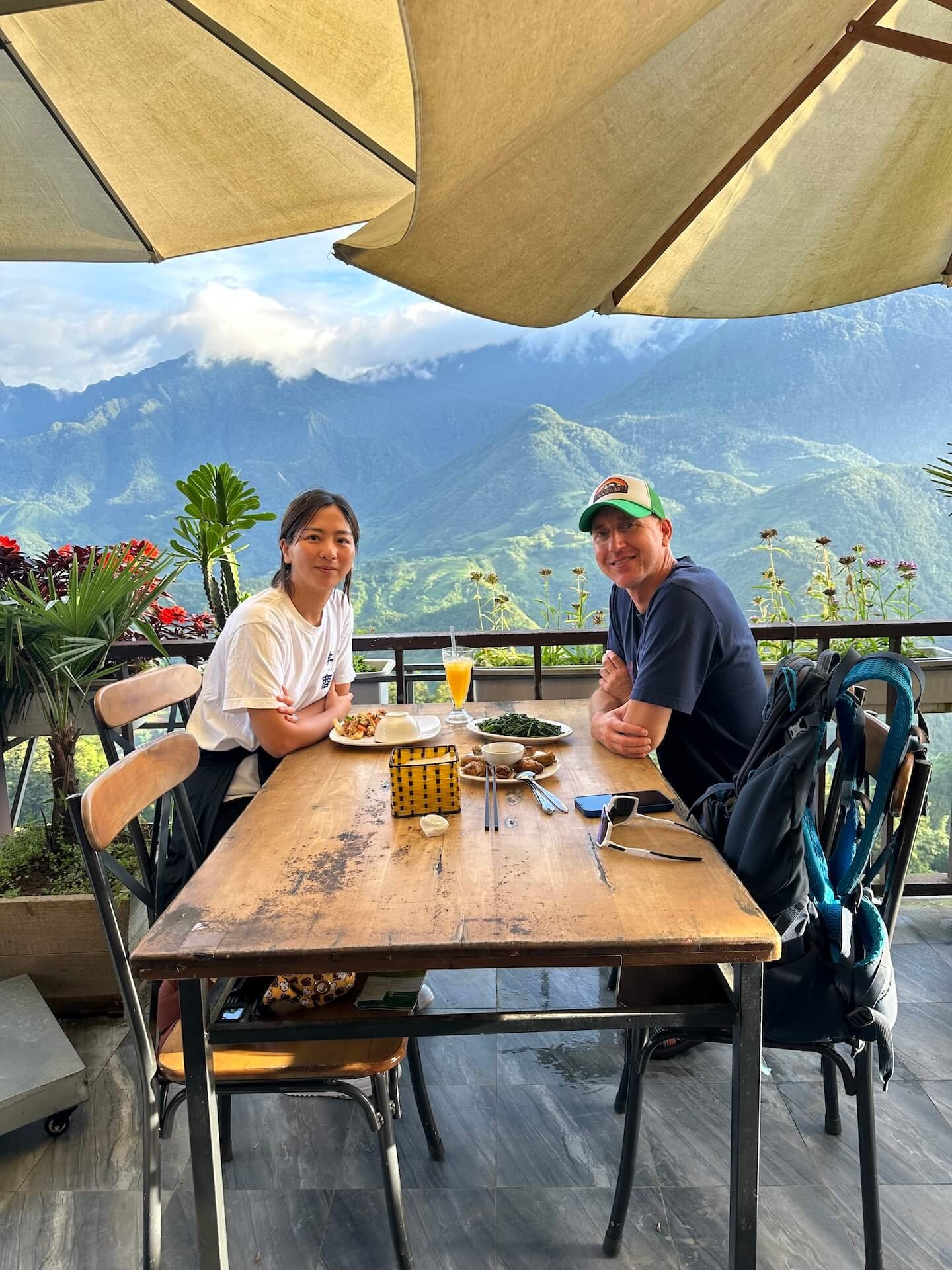
💬 FAQs About Visiting Sapa Without a Tour
Do I need to book anything in advance for Sapa?
It depends on the season. If you’re traveling during a Vietnamese holiday or high season (Sept–Nov, March–May), it’s smart to book your hotel and Fansipan cable car tickets in advance. Trekking and Cat Cat Village don’t require reservations — just show up and go.
Is it safe to trek in Sapa without a guide?
Yes — especially on the main trail from Sapa to Lao Chai, which is well-trafficked and semi-paved. Just watch your footing in rainy season, download offline maps, and be prepared to politely decline offers from unofficial guides along the way.
What’s the best time of year to follow this itinerary?
Spring (March–May) and fall (Sept–Nov) offer the best mix of clear skies and lush landscapes. We visited in the rainy season and still had a great time — just be ready for shifting weather and a bit of mud.
Can I do this itinerary with kids?
Definitely — especially if your kids are used to light hiking or are curious about local culture. The trek to Lao Chai can be shortened or broken into sections, and the Fansipan cable car makes for an epic family memory.
Do locals speak English?
In town, many hotel staff and restaurant workers speak enough English for basic communication. In the villages, English is more limited, but simple gestures and Google Translate go a long way — and the smiles are universal.
🔗 Resources & Booking Links
Here’s everything we used (and recommend) to make our Sapa trip smooth, scenic, and stress-free:
🏨 Lodging
- Pao’s Sapa Leisure Hotel – Our base for this itinerary. Incredible views, comfy rooms, and direct access to the trekking route.
🚠 Tickets & Attractions
- Fansipan Legend Combo Ticket (Klook) – Includes the monorail, cable car, and summit funicular. Instant booking, no paper voucher required.
👣 Tours & Village Visits
- Sapa Day Tours (GetYourGuide) – Browse village treks, Fansipan excursions, and cultural experiences.
- Sapa Experiences (Viator) – Another solid option for guided hikes and day trips in the area.

